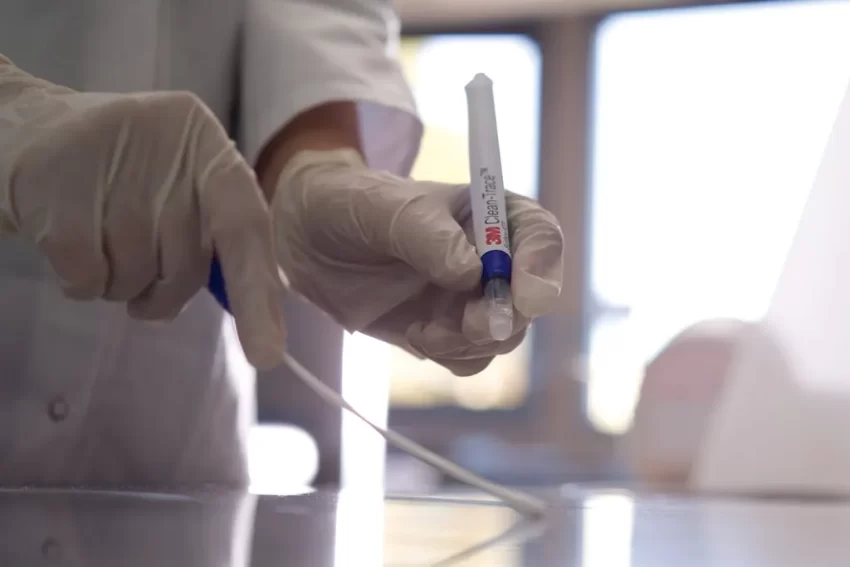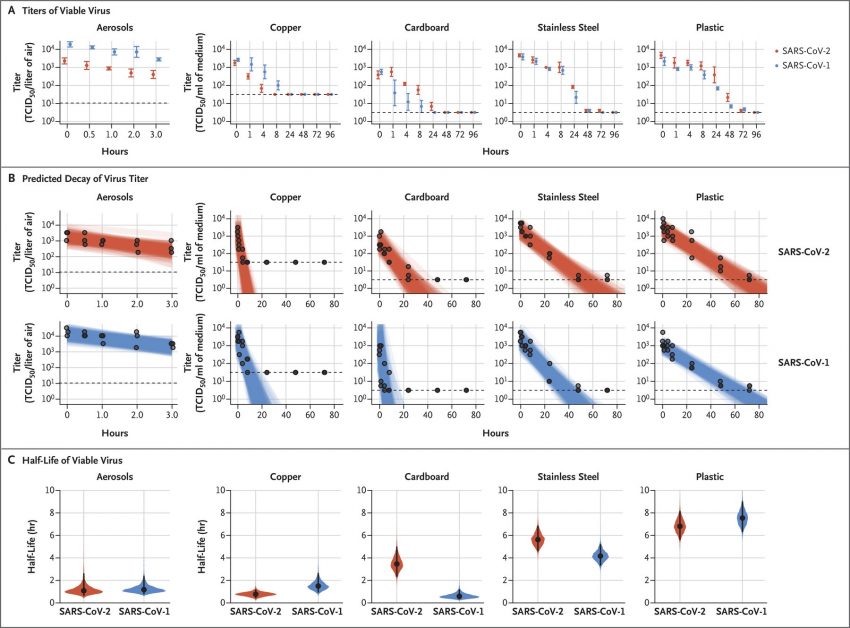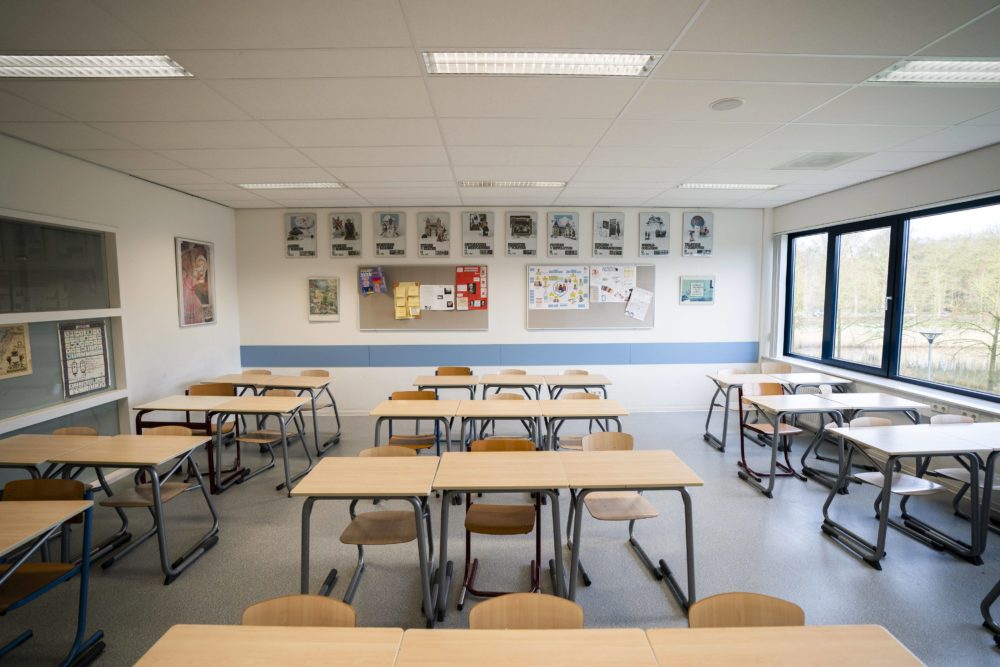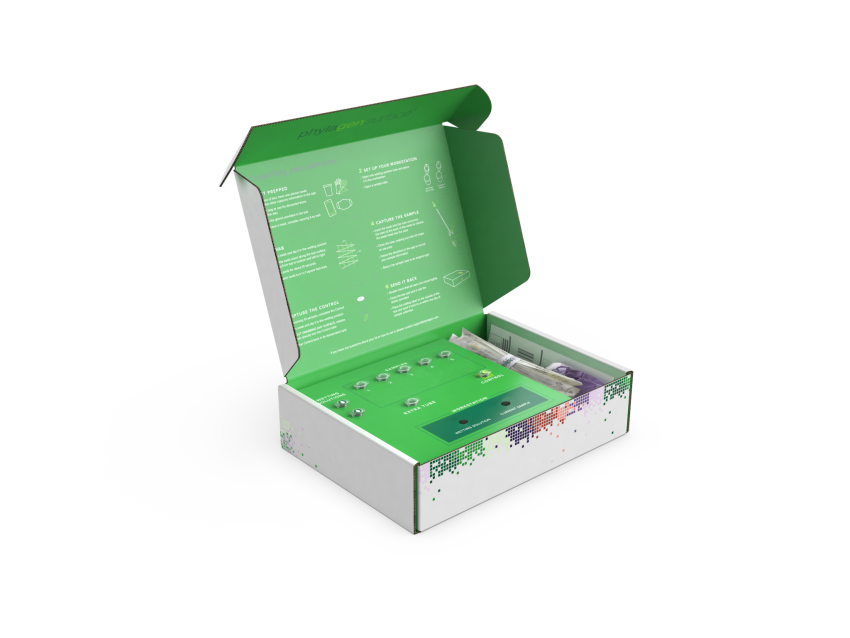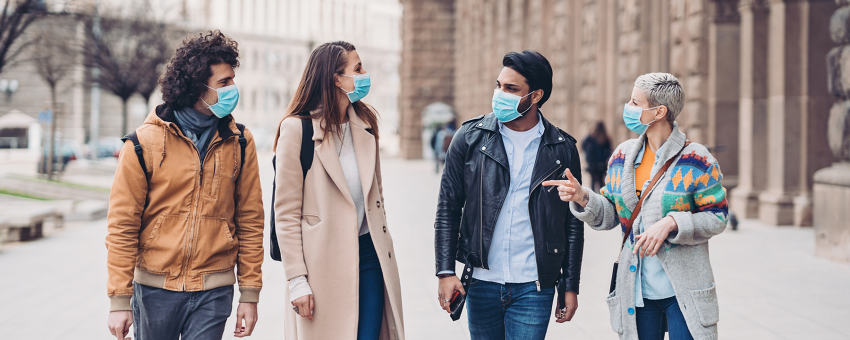Case study: High school classroom
As more and more schools return to in-person teaching, avoiding a major outbreak is of primary concern to communities all across America. Encouraging teenagers to keep any area clean is a battle most parents know only too well, so how can schools ensure the safety of students as they move between classrooms?
John Smith is the principal of a larger suburban high school with over 1000 students. When the school reopened, he put measures in place to protect the students and staff from contracting COVID-19. All students must be certified well to attend school each morning by a parent or guardian, and the school is operating a reduced timetable with only 50 percent of students in school each day.
In classrooms, students sit at individual desks with a plastic partition on three sides to reduce airflow. The teacher remains at their desk behind another partition, and all employees and students must wear masks at all times. At the end of each class, every student uses a spray bottle of disinfectant and disposable paper towels to wipe down their desk and partition. Each night, the school is thoroughly cleaned and disinfected by the janitorial department.
The school had worked extensively with the local health department to put into place measures that John Smith felt would be effective at combating the coronavirus, and that students could be trusted to follow correctly.
Despite these precautions, a cluster of cases was linked to two classes that used the same classroom. John Smith ordered a COVID-19 surface test kit to understand where the school’s precautionary measures had failed. He discovered that many desks, chairs, and partitions all tested positive for SARS-CoV-2.
After speaking with teachers about what went wrong, John Smith learned that many students didn’t know how to correctly use the cleaning solutions they had been given. They weren’t using enough solution, or were wiping the desks and partitions dry before the solution had a chance to kill any potential pathogens. Students were also overlooking cleaning chair backs, which almost all of them touched whenever they sat down or stood up. And the individual bottles of cleaning solution that the students used to sanitize their desks were all found to be contaminated, because none of the students were cleaning the cleaning equipment.
Armed with this knowledge, John Smith adjusted the school’s cleaning protocols in order to account for the mistakes that had been made. Each lesson ended a few minutes earlier, to allow time for the cleaning solution to air dry between classes. Students were also given a checklist of places to clean, including their desks, partitions, chairs, and the cleaning bottles themselves.
Finally, John Smith had each student carry a bottle of hand sanitizer to use before and after they cleaned their desks. Further testing for SARS-CoV-2 was carried out two weeks later, and John Smith found that the school had reduced its levels of contamination by over 95 percent.

